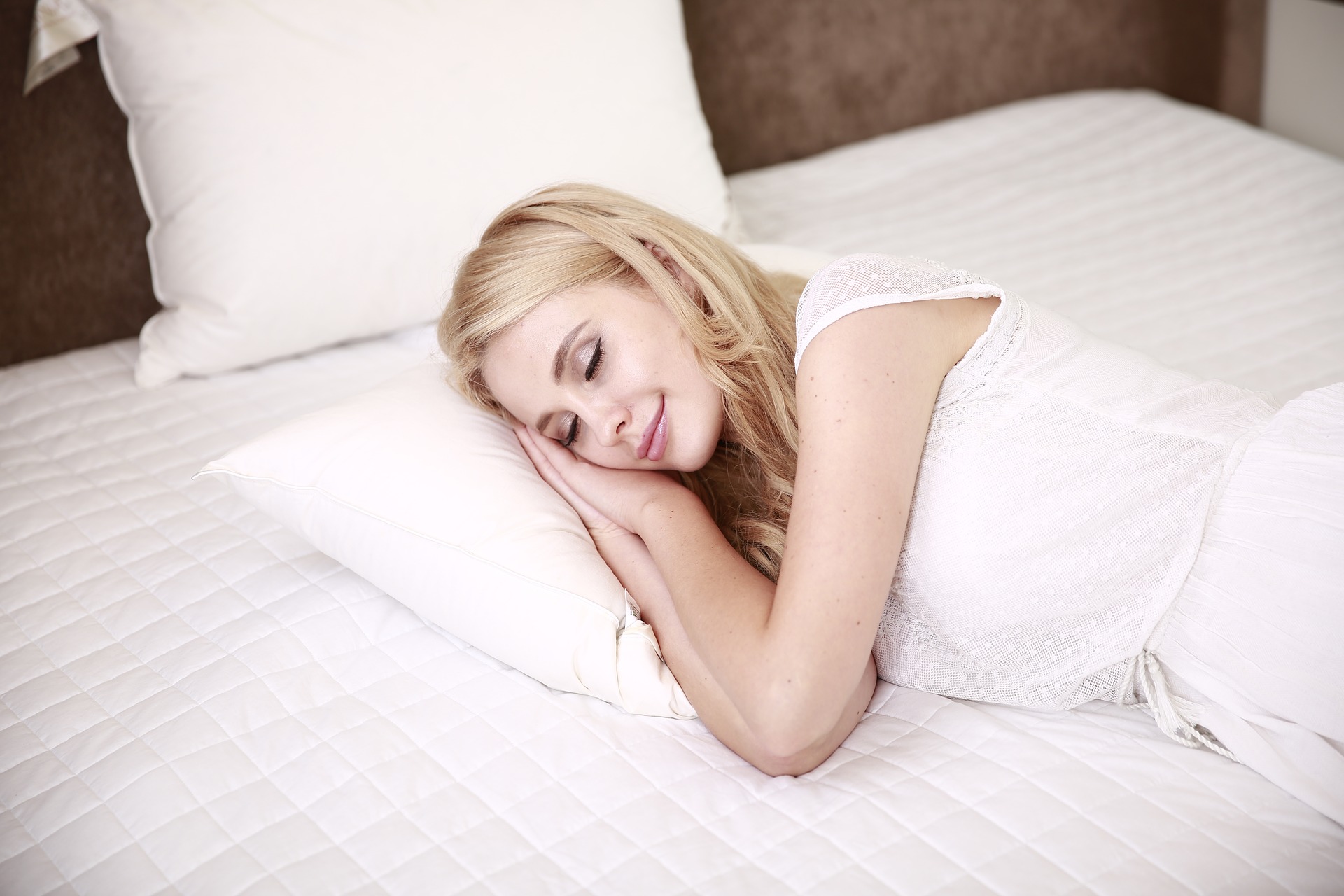How to improve your sleep? Many of us have trouble sleeping – getting to sleep and/or staying asleep. There are some simple ways to give yourself a better chance at a good night’s sleep. If you have trouble going or staying asleep, you might want to do a study of your sleeping environment aka, your bedroom. In particular, to use “natural remedies for insomnia,” you will want to look at your:
- Ambient temperature
- Wall color
- Curtains/shades
- Sounds
- Nighttime habits
- Mattress, pillow and bedding
Ambient temperature
According to experts, the ideal temperature range in your bedroom should be between 60- and 72-degrees Fahrenheit. If your bedroom is too hot, there are several ways to cool it down. Aside from lowering your thermostat so the A/C runs more, installing a ceiling fan, using an electric fan or even opening the windows if the outside is cool (and quiet) are all ways you can reduce the temperature of your bedroom.
Wall color
The mood you are in right before you go to bed can have a significant effect on how fast you go to sleep. If angry, it will take longer to doze off. One factor that can affect your mood is the color of your walls. Hands down the best calming color for bedroom walls is blue. Studies have shown that it is the most conducive color for sleep.
The science behind it lays with the receptors in your eyes called ganglion cells. They are sensitive to color and when they sense blue, they send a signal to your brain that you are in a calm environment. The brain in turn starts lowering your heart rate and blood pressure getting you ready to sleep.
While blue is by far the best color, there are also others than have a calming effect – just not to the extend of blue. The colors yellow, green, silver and orange all have proven to provide study participants with at least 7 hours and 28 minutes of sleep on average. Those sleeping in rooms painted blue slept 7 hours and 52 minutes.
A gallon or two of blue paint is not that expensive and could be just what you need to calm you down and prepare you for a good night’s sleep. It is worth a try!
Curtains/shades
Deep inside your brain’s hypothalamus is your Suprchiasmatic Nucleus which controls your internal clock. It senses light coming into your eyes through your optic nerve and either starts the process to wake up or continues the process if already awake. If there is light coming in your windows from the outside that you have no way of controlling, invest in either blackout shades or curtains to block out that light.
Sounds
As with light, there may be sounds coming in from the outside beyond your control. For some people, it works for them to have a sound machine that produces a constant sound, such as white noise or soothing noises like ocean waves, light rain, etc. If you want to block out all noise, consider using ear plugs.
Nighttime habits
Your nighttime habits can also be a source of your inability to fall or stay asleep. For example, if you use a bluescreen device while in bed, be it TV, e-reader, tablet, laptop or smartphone, the blue light emitted from these devices could be affecting your Suprchiasmatic Nucleus mentioned earlier. Keep in mind the bed should be used for two things: sleeping and sex – that’s it. If you do so, your body senses that because you are in bed, it is time to start winding down and go to sleep. Crazy as it sounds, it works!
Mattress, pillow and bedding
Another source of sleeplessness can be your bed itself. In particular, your mattress, bedding or pillow – any of which can be what is keeping you up at night.
Let’s start with the last one first – your pillow. If you are waking up in the morning with a sore or stiff neck or back on the nights when you do sleep, it could be your pillow is either too soft or hard. Try one that is opposite of what you have now and see if it makes a difference. Web MD suggests back sleepers look for a pillow with neck support on the lower one-third of the pillow, while side sleepers should use a firmer pillow that supports the distance between the ear and shoulder equally.
A worn-out mattress can also keep you awake at night because you can’t get in a comfortable position due it lack of proper support. If it is eight years old or older, it should be replaced anyway. Look for deep impressions that stay in the mattress. These can cause painful pressure points making it impossible to sleep (but you may not know that is the cause). Another sign your mattress is not supporting you the way it should is if you wake up with aches and pains and they disappear within a couple hours of getting up.
Lastly, your bedding should be comfortable. If you tend to sweat while sleeping, look for bedding made from one of the moisture-wicking fabrics. Getting the sweat off your skin will make you more comfortable. Cotton, wool, silk, bamboo and linen all qualify as moisture-wicking. However, if it is too cool in your bedroom, sheets made from polyester or synthetic satin trap moisture and keep you warmer.
In an environment where the outside ambient temperature varies, you may want to have a lighter set of sheets when it is warm in the summer and a heavier set like flannel in the winter when it is colder.
By using the tips in this article, you can make changes to your sleeping environment and enjoy a good night’s sleep over and over. Give it a try to see if you can master the art of falling asleep and staying asleep.







